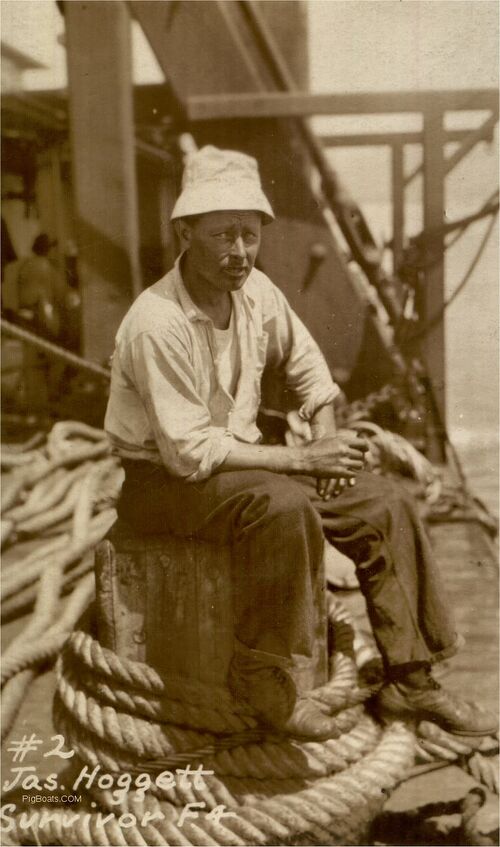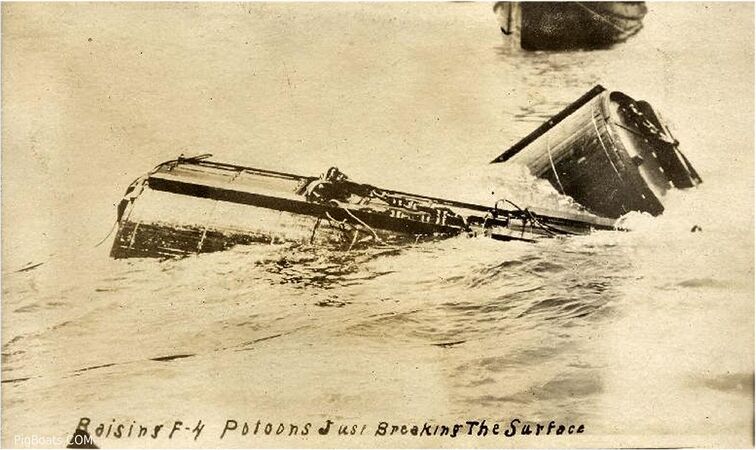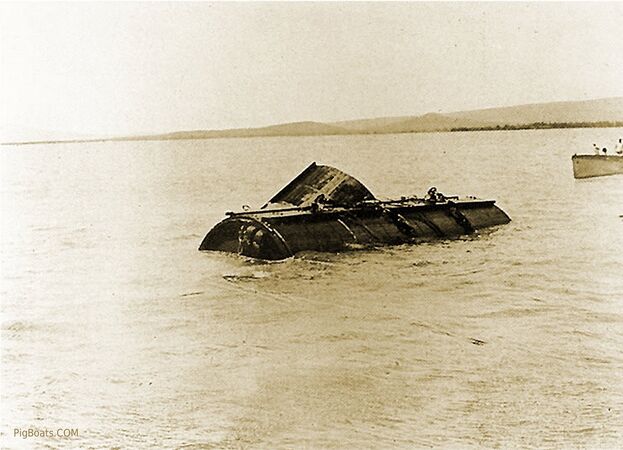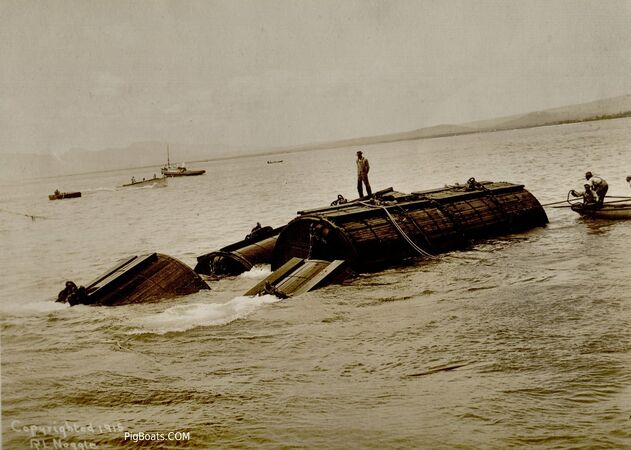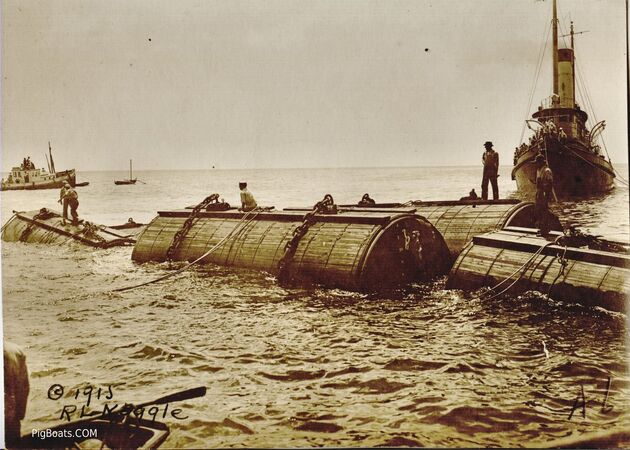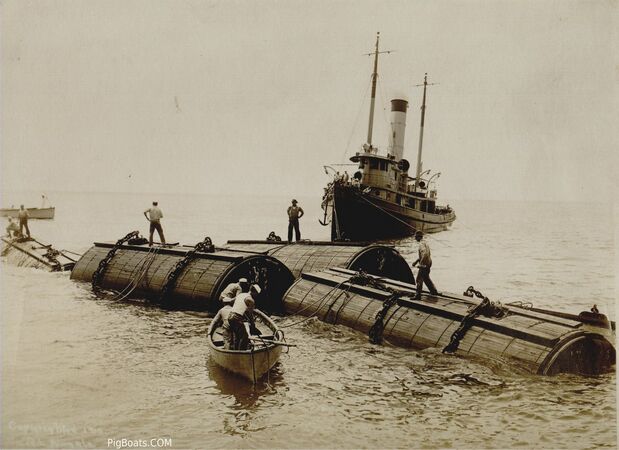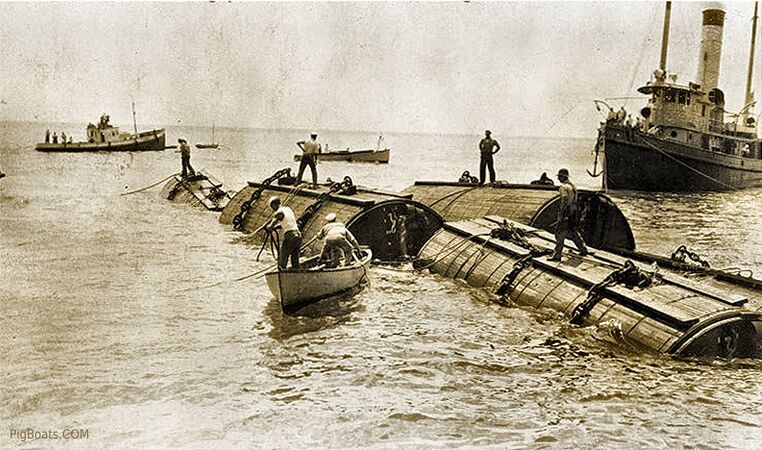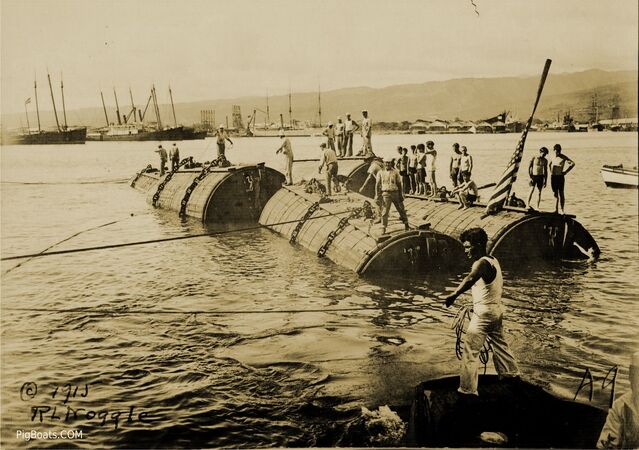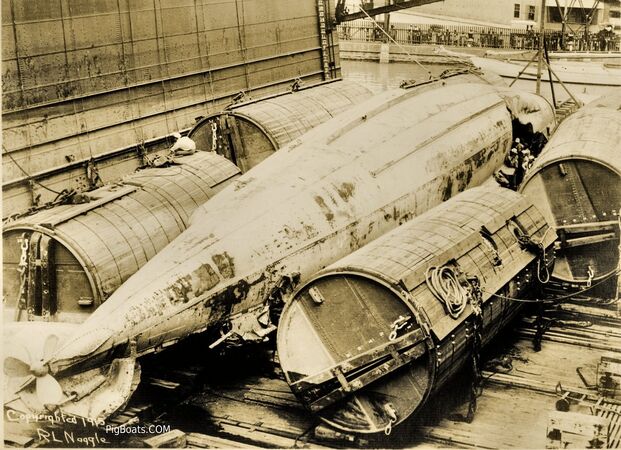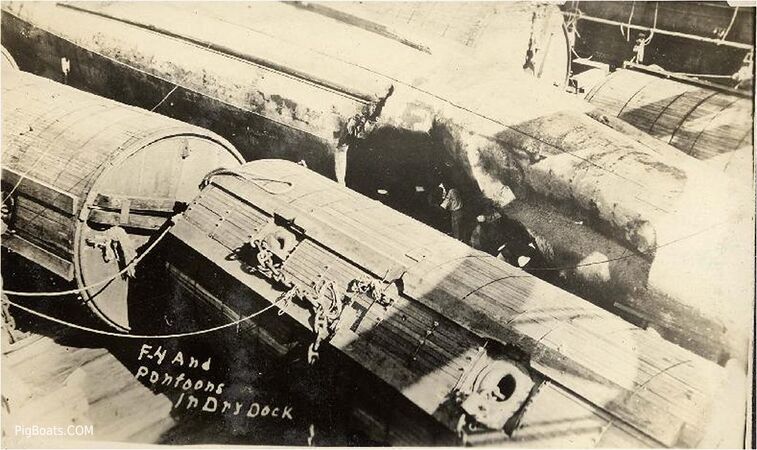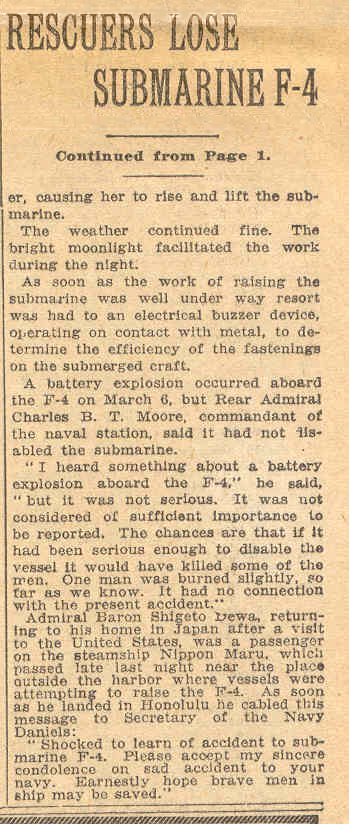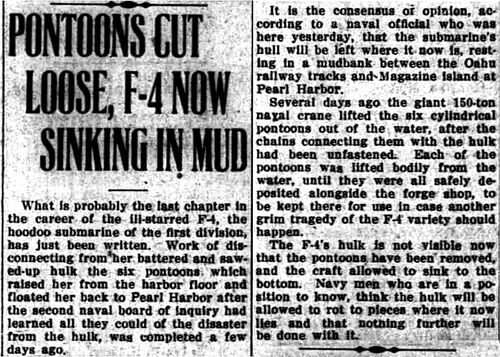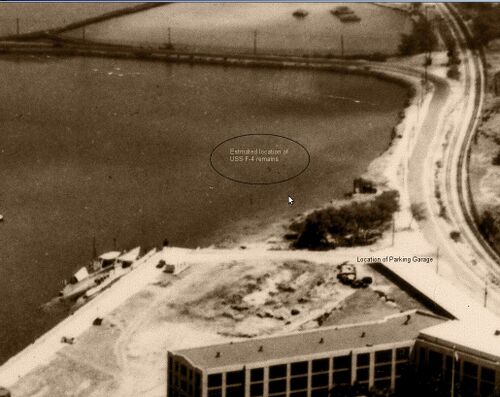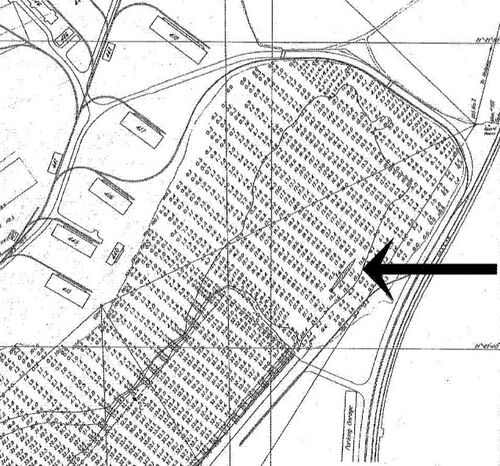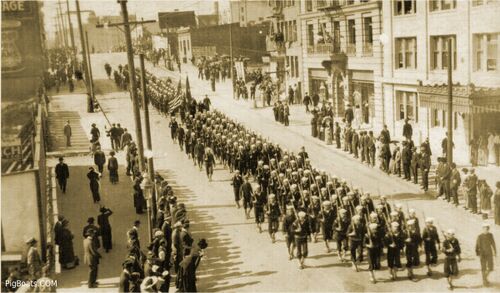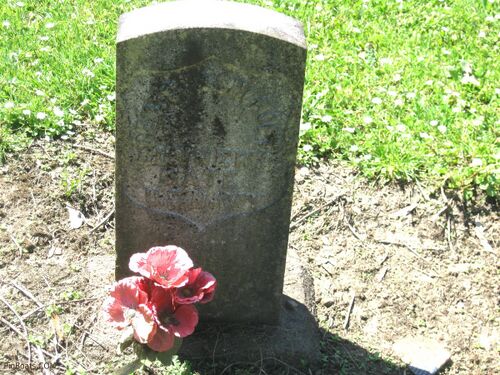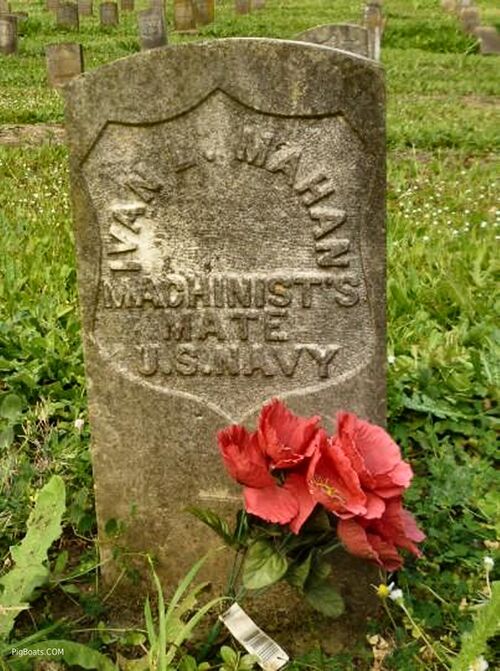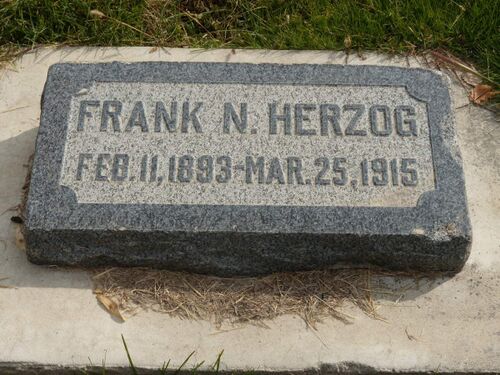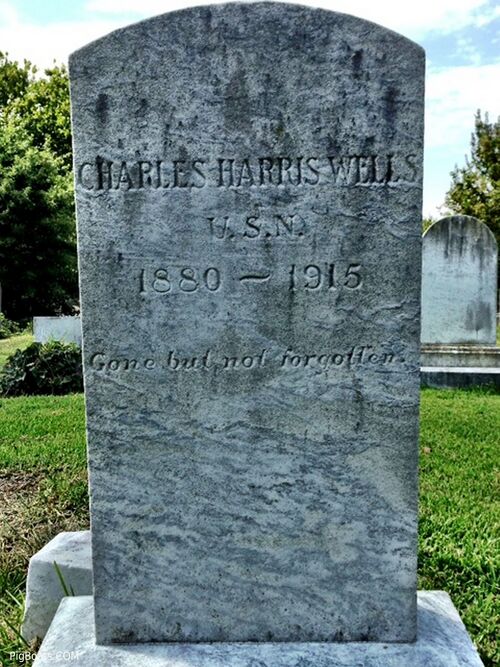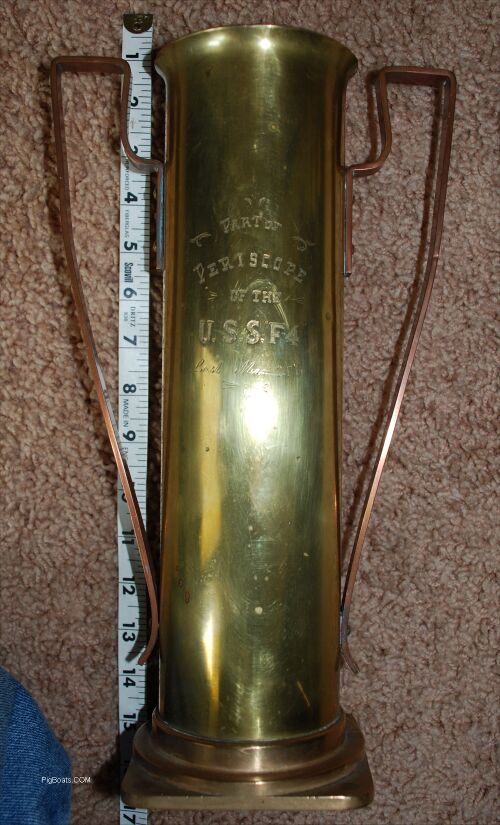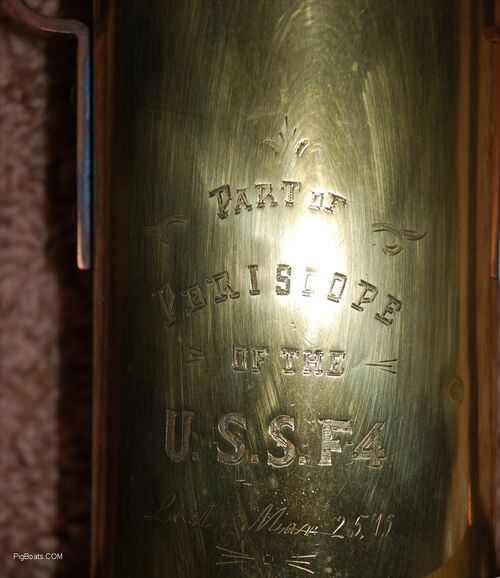F-4 salvage
Search for the Lost Boat
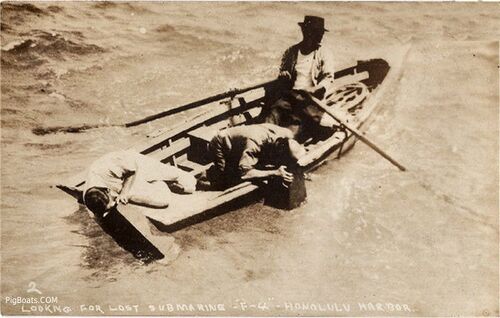
Here two men are using a box with a glass plate in the bottom that allowed a clearer view of things underwater.
Photo in the private collection of Ric Hedman.
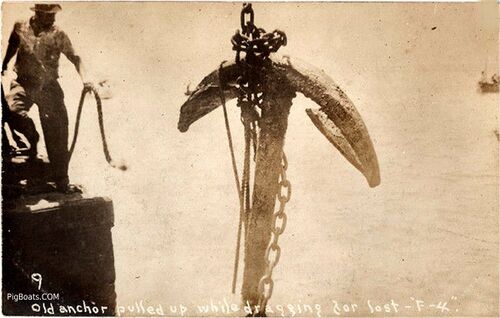
According to the Board of Investigation Report, when the weight of the anchor was discovered Jack Agraz, Chief Gunners Mate, a Navy diver from the USS F-1, donned his gear and followed the line to the target. Three crews of four men each manned the hand turned air pump suppling air to him. He discovered the grapple chain was wrapped around "an old anchor" at 215 feet. The F-4 had not been found.
Photo in the private collection of Ric Hedman.

Photo in the private collection of Ric Hedman.

Photo in the private collection of Ric Hedman.
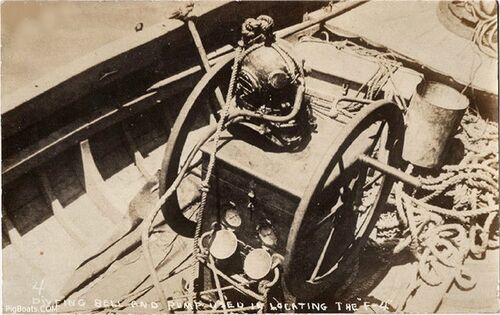
Photo in the private collection of Ric Hedman.
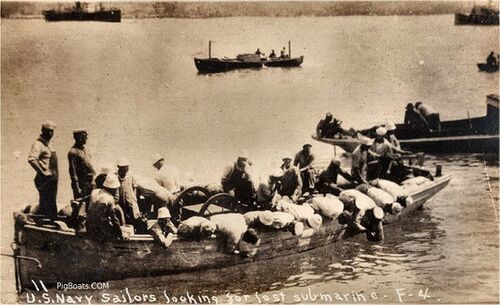
Photo in the private collection of Ric Hedman.

Photo in the private collection of Ric Hedman.
Salvage Work

Photo in the private collection of Ric Hedman.
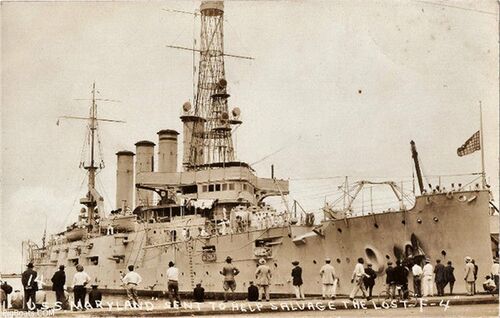
Photo in the private collection of Ric Hedman.

Photo in the private collection of Ric Hedman.
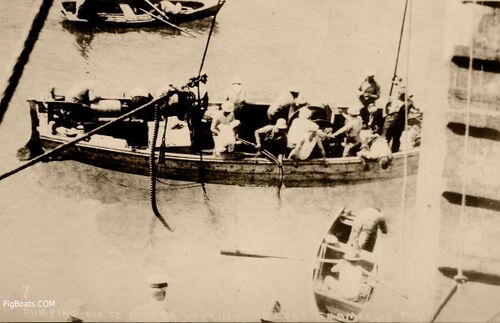
Photo in the private collection of Ric Hedman.
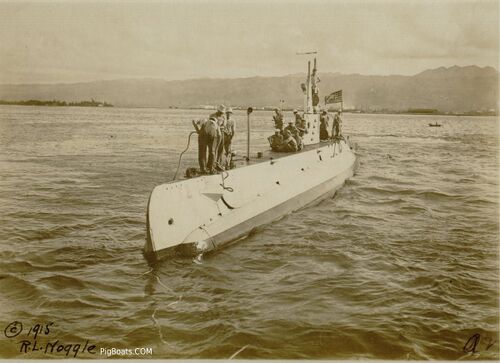
The rope that is being worked on by the men on deck can be seen floating in the water in front of the submarine. There is a similar one stretching from the after deck to what is assumed to be the salvage barge. The F-2 is probably in the process of mooring to that barge to supply the air needed for the pontoons.
Note the proximity to the shore. The F-4 sank just outside of the entrance to Honolulu Harbor, in Mamala Bay. With Oahu essentially being the top of an underwater mountain, the water depth drops off precipitously as soon as you leave the harbor.
Photo in the private collection of Ric Hedman.
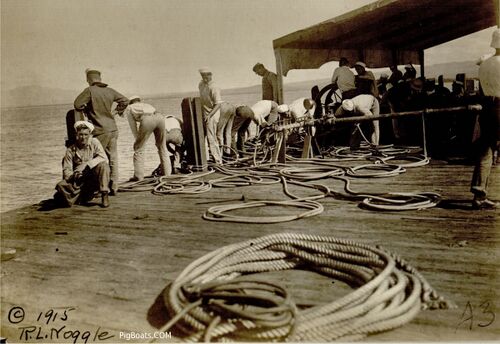
Photo in the private collection of Ric Hedman.
Raising the Boat with Pontoons
Photos in the private collection of Ric Hedman.

In the center background is the Navy floating cantilever pontoon crane YD-25. The crane had a lifting rating of 150 tons. Too little to have lifted the flooded F-4. She was destined to become a visual fixture at Pearl Harbor for the next dozen years.
In the left background the USS Maryland is moored. She is the vessel that brought the six lifting pontoons to Hawaii.
Newspaper photo.

Photo in the private collection of Ric Hedman.
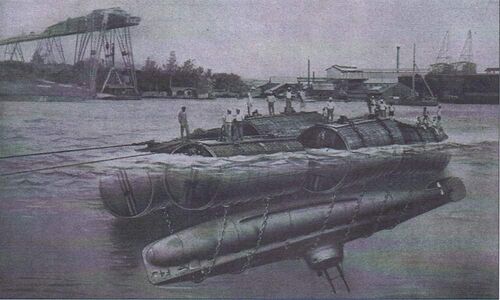
Photo from Beneath the Surface: WWI Submarines Built in Seattle and Vancouver by Bill LIghtfoot.
Photos in the private collection of Ric Hedman.
In Drydock

Newspaper photo.

Photo in the private collection of Ric Hedman.
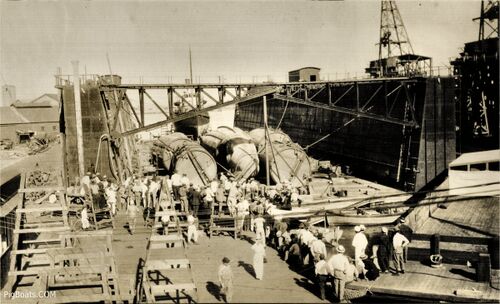
Photo in the private collection of Ric Hedman.
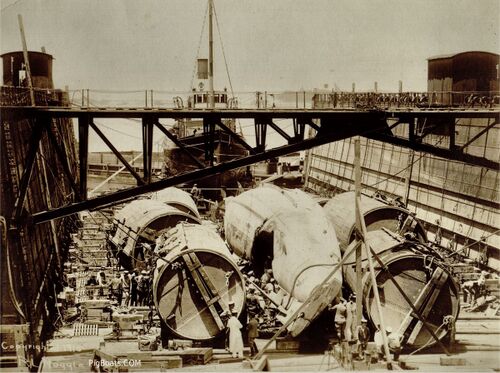
In this view the boat is upside down, with the port side facing up, looking at the bow. The strake like object at the top is the port side bilge keel, with the main keel just to the right of that. It is important to understand that the leaking battery acid did not cause the implosion. The battery acid weakened the bottom of the hull structure, causing a leak which made the boat heavy, quickly resulting in a loss of control. It was when the boat exceeded crush depth that the hull imploded.
Admiral Clifford J. Boush, Commandant of the 14th Naval District in Hawaii, is seen in the foreground, wearing the long white coat.
Photo in the private collection of Ric Hedman.
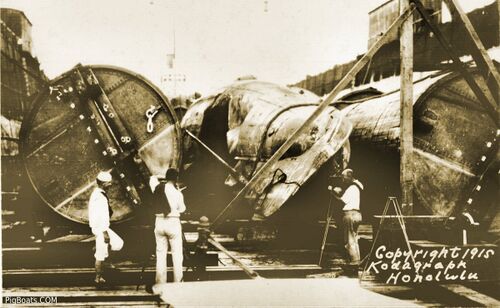
Photo in the private collection of Ric Hedman.
-
Photo in the private collection of Ric Hedman.
-
Photo courtesy of Mike Dilley, whose father, Homer 'Pat' Dilley, sailed aboard the USS F-2.
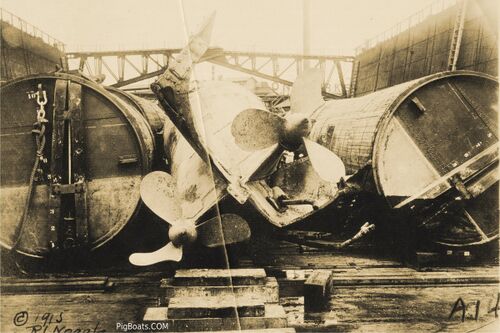
These newly installed experimental propellers were of a special design that were intended for low RPM and high efficiency. It is thought that at high speeds they would have done little to drive the submarine to the surface. The official report stated that these propellers "were the secondary cause of the disaster" by providing insufficient water flow over the stern planes and thus negatively impacting the control of the vessel.
Photo in the private collection of Ric Hedman.

The extensive damage to the after end of the submarine is very evident. Remembering that the submarine is almost upside down, the twisted piece of metal to the left and twisted towards the camera is actually part of the upper skeg running from the deck to the rudder. It has been bent over more than 90 degrees. The blades of the screws have been bent over and a huge chip has been made in the blade of the screw.
Photo in the private collection of Ric Hedman.
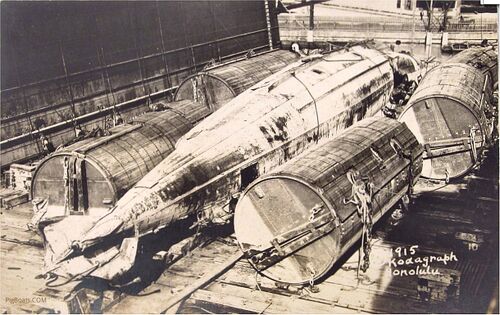
Photo in the private collection of Ric Hedman.

Photo in the private collection of Ric Hedman.
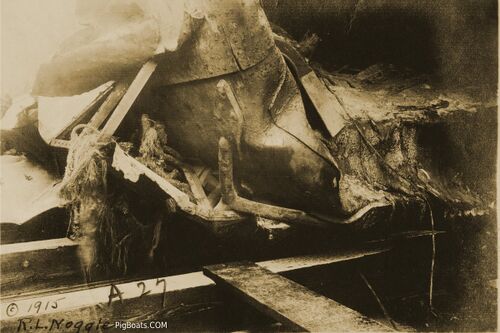
Photo in the private collection of Ric Hedman.

This photo shows the F-4 with her bow cap rotated to line up with two of her four torpedo tubes. This was done so that the weapons in the tubes could be removed. To access the other two tubes the cap was rotated to the right. To completely close all four tubes the cap was rotated so that the openings were vertical and behind the stem.
Photo in the private collection of Ric Hedman.
Post Salvage
